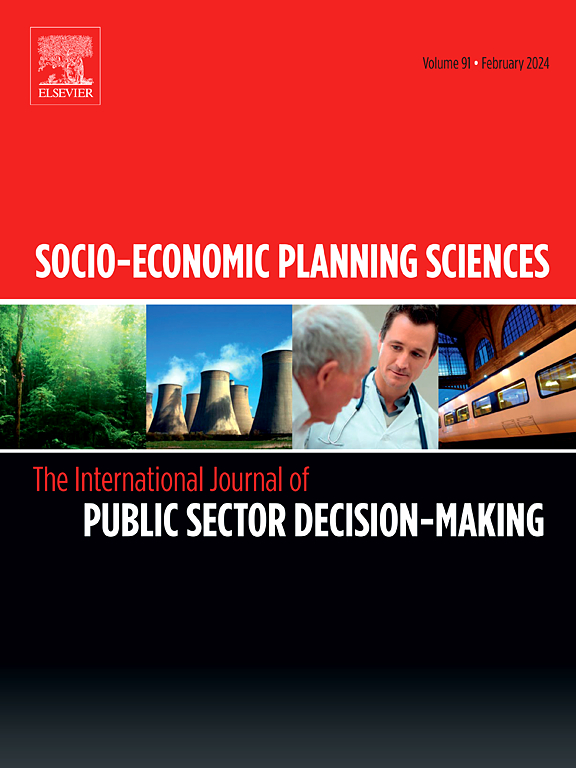增强医疗系统弹性:优化战略投资组合
IF 5.4
2区 经济学
Q1 ECONOMICS
引用次数: 0
摘要
医疗保健系统正面临着越来越多的挑战,例如医疗保健专业人员的短缺和不平等分布,人口老龄化和慢性病增加导致的需求增加,以及日常中断。在设施一级,可以针对日常挑战实施各种缓解战略。每种缓解战略都有其自身的成本和结果。这些投资将加强医疗机构的日常抵御能力,从而减少服务中断的风险,但由于预算有限,并非所有缓解战略都是可能的。我们的研究重点是开发一个模型,以确定一个最佳的投资策略,旨在提高医疗保健系统的弹性。这种双目标模型的目的是同时最小化患者的路程和由于系统中断而延迟的治疗数量。患者进入其首选名单上的机构的可能性受到投资组合的强烈影响。为了应对这一挑战,我们提出了一种基于马尔可夫链模型的新方法来评估患者选择设施的概率。此外,该问题使用基于关卡的防御和概率设施故障。使用专用的非支配排序遗传算法(NSGA-II)解决了所处理的问题。通过大型实验和灵敏度分析活动分析了所提出方法的有效性和鲁棒性。本文章由计算机程序翻译,如有差异,请以英文原文为准。
Enhancing healthcare system resilience: Optimization of strategic investments portfolio
Healthcare systems are facing growing challenges such as the shortage and unequal distribution of healthcare professionals, a rise in demand due to an aging population and a rise in chronic diseases but also daily disruptions. At a facility level, various mitigation strategies against everyday challenges can be implemented. Each mitigation strategy comes with its own costs and outcomes. These investments will strengthen the day-to-day resilience of healthcare facilities, thereby reducing the risk of service disruptions, but not all mitigation strategies are possible due to limited budget. Our research focuses on developing a model to identify an optimal investment strategy aimed at enhancing the resilience of healthcare systems. The aim of this bi-objective model is to simultaneously minimize the distances traveled by patients and the number of treatments deferred due to system disruptions. The probability of a patient accessing a facility on his preferred list is strongly impacted by the investment portfolio. To meet this challenge, we propose a new approach for evaluating the probability that a patient will choose a facility based on a Markov chain model. Moreover, the problem uses level-based fortification and probabilistic facility failures. The addressed problem is solved using a dedicated Non-dominated Sorting Genetic Algorithm (NSGA-II). The effectiveness and the robustness of the proposed approach are analyzed through a large experimental and a sensitivity analysis campaign.
求助全文
通过发布文献求助,成功后即可免费获取论文全文。
去求助
来源期刊

Socio-economic Planning Sciences
OPERATIONS RESEARCH & MANAGEMENT SCIENCE-
CiteScore
9.40
自引率
13.10%
发文量
294
审稿时长
58 days
期刊介绍:
Studies directed toward the more effective utilization of existing resources, e.g. mathematical programming models of health care delivery systems with relevance to more effective program design; systems analysis of fire outbreaks and its relevance to the location of fire stations; statistical analysis of the efficiency of a developing country economy or industry.
Studies relating to the interaction of various segments of society and technology, e.g. the effects of government health policies on the utilization and design of hospital facilities; the relationship between housing density and the demands on public transportation or other service facilities: patterns and implications of urban development and air or water pollution.
Studies devoted to the anticipations of and response to future needs for social, health and other human services, e.g. the relationship between industrial growth and the development of educational resources in affected areas; investigation of future demands for material and child health resources in a developing country; design of effective recycling in an urban setting.
 求助内容:
求助内容: 应助结果提醒方式:
应助结果提醒方式:


